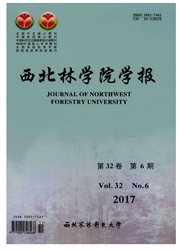

 中文摘要:
中文摘要:
利用2012年RapidEye高空间分辨率遥感影像并结合野外样方数据,采用多种建模技术进行生物量的反演和制图。先依据RapidEye光谱数据发展出包括NDVI、RVI等多种植被指数、光谱特征图像及纹理特征,再通过相关分析筛选建模所需因变量,采用支持向量机、BP神经网络和随机森林算法建立森林生物量估测模型并进行精度验证。结果表明,基于支持向量机的建模R2为0.687,验证R2为0.641,平均相对误差为0.306;基于BP神经网的建模R2为0.552,验证R2为0.358,平均相对误差为0.525;基于随机森林的建模R2为0.850,验证R2为0.324,平均相对误差为0.468。采用支持向量机算法所制作的空间意义明确的森林生物量分布图,为制定合理的森林经营措施提供有益指导。
 英文摘要:
英文摘要:
The major objective of the current study was to use RapidEye imagery in synergy with filed inven- tories to create and validate three empirical modeling algorithms (Support vector machines-SVM, BP net- works and Random forests-RF) for mapping plantations' biomass at a local scale. The predicting variables involved diverse vegetation indices, spectral features, textures and topographic attributes. The results showed that for SVM-based model, the regression R^2 was 0. 687 and the corresponding validation R^2 was 0. 641 with an average relative error of 0. 306; for BP network-based model, the regression R^2 was 0. 552 and the validation R^2 was 0. 358 with an average relative error of 0. 525; for RF-based model, the regres- sion R^2 was 0. 850 while the validation R^2 was 0. 324 with an average relative error of 0. 468. The optimal model, SVM-based model was finalized to retrieve biomass spatial patterns, which provide insights and implications for local forest management practices and planning.
 同期刊论文项目
同期刊论文项目
 同项目期刊论文
同项目期刊论文
 期刊信息
期刊信息
